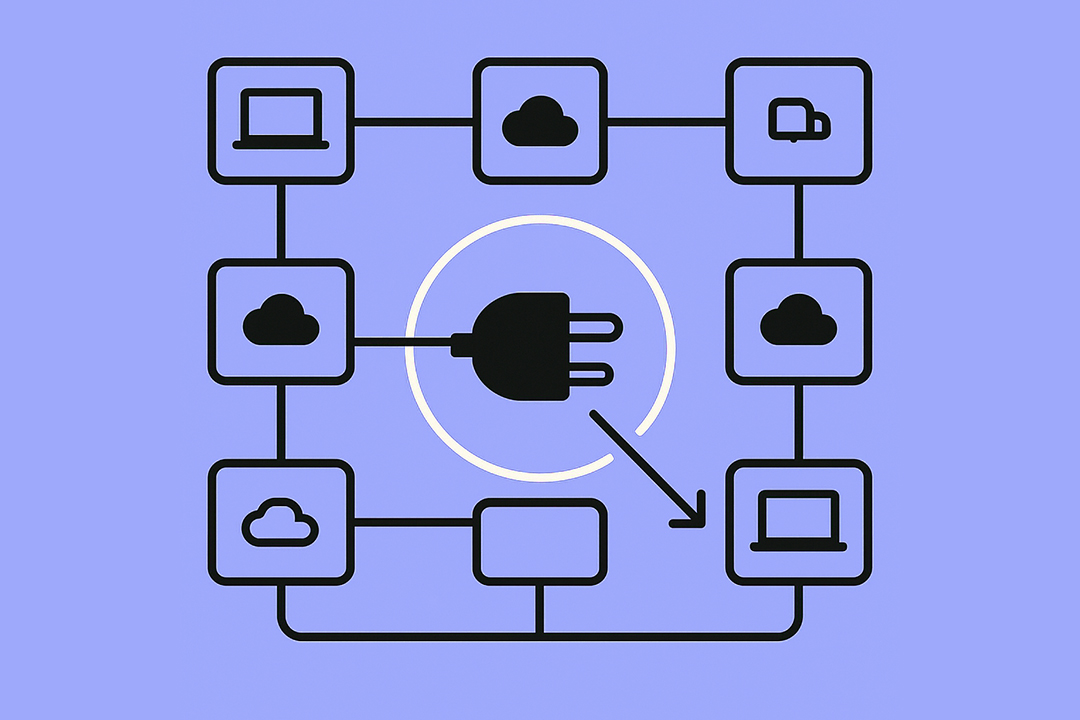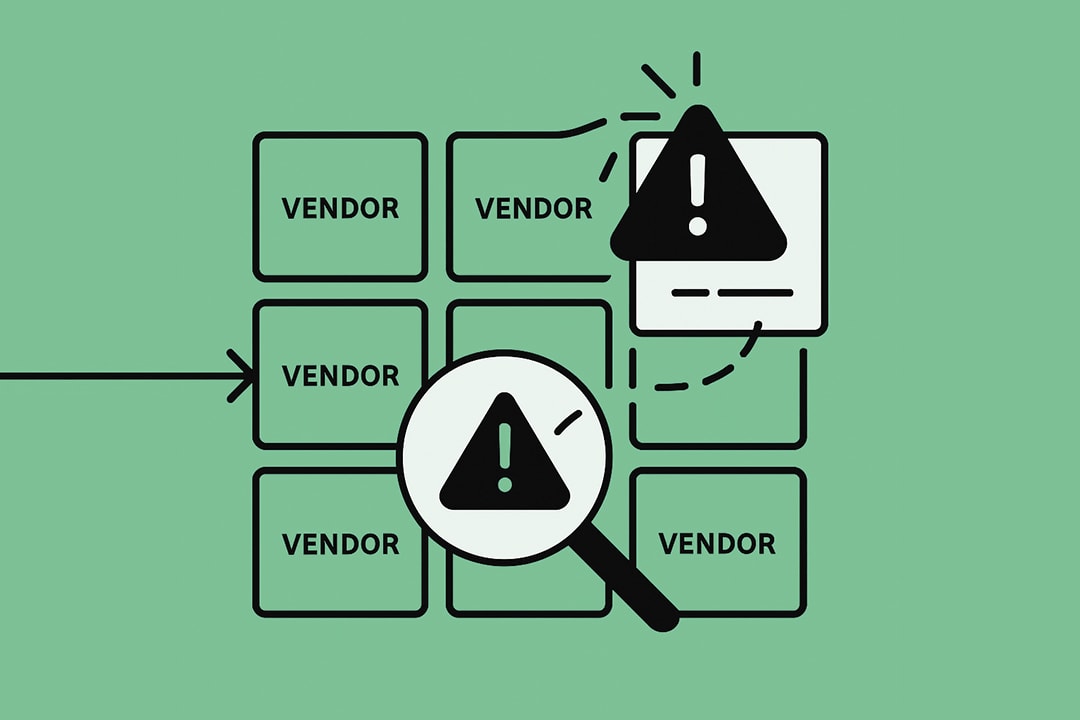Vendor negotiation for value in vendor selection
How to negotiate with vendors during vendor selection: set clear objectives, lock SLAs and data ownership, run a pilot, package price with terms, and clean exits.

What vendor negotiation is and why it matters
Vendor negotiation is the structured, evidence‑based conversation that turns intent into outcomes. In vendor selection, it aligns scope, service levels, data rights, pricing, and exit details with what the business actually needs. Done well, vendor negotiation converts polished demos into clear, enforceable commitments you can operate against.
Why it matters: weak agreements surface later as downtime, overruns, and lock‑in. Strong terms protect reliability (clear SLAs with remedies), safeguard data (ownership and portability), and keep options open (clean exits and fair renewals). Effective vendor selection depends on this discipline; you secure value up front rather than trying to fix gaps after go‑live.
Negotiation starts before price. Define outcomes and constraints, set non‑negotiables, and decide where you can flex. Compare credible alternatives, run small proofs to validate claims, and capture promises in writing. When vendor selection is anchored in clear requirements and objective evidence, vendor negotiation shifts from haggling to shaping a partnership—faster onboarding, fewer surprises, and results you can defend to leadership.
1. Set clear objectives and a walkaway
Start with a simple one-page brief. Write the problem, the outcome you need, the scope, the budget range, and the timeline. This gives your team a shared target and makes vendor negotiation faster and calmer.
List your non‑negotiables: security standards, data ownership, support hours, and reporting. These become your vendor selection criteria. If a vendor can’t meet them, you save time by moving on.
Decide when you want to walk away or have a BATNA (Best Alternative to a Negotiated Agreement). If talks stall, will you pause, run a small pilot with another supplier, or reduce scope? Keep other vendors closely shortlisted in case negotiations with one fail. A clear fallback keeps vendor negotiation objective and protects your pace.
Write the SLA targets you expect, the response times, and what happens if they’re missed. Add what “good” looks like for onboarding, training, and success reviews. Keeping the vendors accountable for these SLAs is also something that needs to happen constantly.
Set simple and achievable milestones in the vendor selection process and delegate the tasks. Name the owners and approvers for each step. Share this path with vendors so everyone knows how decisions will be made.
2. Build the right team
Put the right people in the room before you start vendor negotiations. This keeps vendor selection steady and cuts back‑and‑forth later.
Who to include:
- IT and architecture to check fit and integration
- Security to confirm data controls
- Finance to sanity‑check costs and terms
- Legal to lock SLAs, data ownership, and exit language
- Procurement to run the vendor selection process
- A business owner to confirm outcomes
Set clear roles:
- Evaluators score against your vendor selection criteria
- A decision owner makes the call at each gate
- A coordinator keeps notes, deadlines, and documents in one place
Work as one team:
- Use a shared brief and scorecard for IT vendor selection
- Hold short weekly check‑ins to unblock decisions
- Agree on the questions you will ask as you negotiate with vendors
- Send a single, aligned message to every supplier
Make the path visible:
- Publish the steps: longlist, shortlist, pilot, award
- List who approves each step and what evidence is required
- Share timelines so vendor negotiation stays on track
With the right team and simple rules, vendor selection moves faster, decisions are clearer, and you spend your time on real trade‑offs—not on rework.
3. Prepare with simple facts
Do a quick prep before you start vendor negotiation. Gather the basics: what you use today, how many users, key workflows, and any limits you can’t break. This keeps vendor selection grounded in reality instead of guesswork.
Collect two or three credible alternatives and a short list of must‑ask questions. Note the few numbers that matter most to you. These could be important metrics like uptime targets, support response times, data export steps, and a rough ROI story. This makes vendor negotiation about facts, not pressure.
Decide what you can trade and what you won’t. Be clear on scope you can phase, term length that can be flexible, and the non‑negotiables you won’t move on (security, data ownership, exit path). When you negotiate with vendors, this clarity makes decisions easier.
4. Lock the non‑negotiables early
Put the basics on the table before price. In vendor negotiation, lead with SLAs, data ownership, export steps, privacy terms, and a clean exit. This keeps vendor selection focused on protecting what’s critical and sensitive.
Make SLAs concrete and set review timelines to transparently discuss deliverables and how they’re holding up. Set uptime targets, response and resolution times, RCA deadlines, escalation paths, and support hours. Ask for recent status history and updates regularly. Any vendors that’s uncomfortable with this are a red flag you should be careful of.
You own the data. Define export formats and APIs, delivery timelines, deletion guarantees, and any limits during DR or maintenance. Avoid fee‑gated exports.
Write the exit path. Set notice periods, transition help, handover artifacts, and what happens to licenses and IP at the end.
Use one short template for all suppliers so the vendor selection process stays fair and comparable. Tie each item back to your vendor selection criteria. If a seller pushes price first, steer back to terms. When these foundations are set, vendor negotiation gets faster, cleaner, and the agreements become easier to enforce after production.
5. Negotiate prices better
Treat price as a bundle of outcomes, not a single line item. In vendor negotiation, tie money to what you get and when you get it. This keeps vendor selection focused on value and not sales items that come as “add-ons” for additional prices.
Ask for renewal protections. Cap future increases and set clear rules for adding users or usage. It prevents surprises and keeps the vendor selection process predictable.
Trade longer terms or a larger scope for better support, training, or roadmap access. When you negotiate with vendors, combine asks so you give one thing to get several. And remember to aim for straightforward invoicing, reasonable net terms, and credits when SLAs are missed. Map these back to your vendor selection criteria.
Line up two or three options side by side: price, milestones, support, renewals, and exit help. This makes IT vendor selection easier to judge and explain. Compare your options based on priority and the charges that are incurred accordingly. Sometimes, more expensive options can be a better fit based on you need more.
6. Prioritize needs and flexibility
Sort your needs into must‑haves and nice‑to‑haves. Keep the list short and clear. Must‑haves should tie to risk, uptime, data control, or go‑live dates. Everything else can wait. This focus keeps vendor selection clean and fast.
Start with a smaller first step that proves value, then add features later. Use simple milestones to stage the rollout. This reduces risk and gives both sides room to adjust as you learn to work with each other. As you get more comfortable, you’ll be able to work with each others’ synergies and take bolder steps.
Keep yourself flexible enough to negotiate changes for scale. You might move on timing, seat counts, or contract length, but not on security, data rights, or exit steps. Tell suppliers where you can trade and where you cannot. It speeds vendor negotiation and avoids dead ends.
Write a simple “if/then” grid: if we extend term, then we expect better support; if we expand scope, then we expect lower unit cost. This helps everyone see the path to a fair deal. It’s also important to remember that the negotiation should make sense even for the vendor, so always consider what you’re asking is fair for both sides.
7. Use fair competition and timing
Keep at least two credible options in play. Side‑by‑side proposals make vendor negotiation grounded and calm. You avoid pressure tactics and keep leverage without posturing. You also don’t want to come off as desperate, which can be avoided if you have enough options to fall back to in case one negotiation doesn’t convert.
Make proposals comparable. Share a simple question list and ask for the same details from each supplier. This keeps the vendor selection process fair and lets you judge against the same vendor selection criteria.
Set clear dates for various milestones along the vendor selection process. Move quickly, but don’t rush key checks. When timing is clear, vendor selection stays on track, and you avoid last‑minute friction between both parties.
End‑of‑quarter can help, but only if you’re truly ready. If you still need a pilot or a security review, say so. A steady timeline makes vendor negotiation easier and avoids bad trade‑offs.
If you prefer one option, ask them to match the best terms you’ve seen. Keep the conversation about fit, service, and exit protections—not just a lower quote. Don’t try and play both sides by hiding critical details; you also don’t want to lose your best options to a lack of proper and ethical conversation.
8. Prove it before you sign
Run a small, focused pilot before you finalize vendor selection. Test the real flows you care about: sign‑in, data import/export, key workflows, and basic reporting. This keeps the vendor selection process grounded in proof, and you get one more reason to trust the vendor.
Define clear pass/fail checks for uptime during the pilot window, response times from support, and how quickly issues get fixed. Tie these checks back to your vendor selection criteria so results are easy to compare. Don’t overcomplicate things for the vendor and for your own sake.
Connect to your identity system, logging, and one downstream tool to validate integrations and compatibility. Move a real (sanitized) data sample through the system. Confirm you can export your data in the format you need. These basics de‑risk IT vendor selection more than any demos ever could.
Capture what worked, what broke, time to fix, and any workarounds. With a well-documented PoC, vendor negotiation becomes faster as both sides can point to the same evidence and use that as an important point in the negotiation later.
Use this pilot to shape terms and ask for stronger SLAs if some things break or are not as you expected. If export needed extra steps, write them down. When you negotiate with vendors using concrete pilot results, you get clearer language, cleaner handoffs, and better outcomes from vendor selection.
9. Keep the relationship healthy after you sign
Agree on a small set of KPIs, a shared dashboard, and a quarterly check‑in. This will help set a rhythm of accountability on both sides and the delivery visible, tying day‑to‑day work back to what you agreed during vendor negotiation.
Prepare early for renewal. Ninety days out, compare results to the contract: SLAs met, adoption, support quality, and open risks. If gaps remain, update the plan—or the terms. Treat each renewal as a checkpoint in your vendor selection process.
Name and appoint owners on both sides, document escalation paths, and refresh contact lists after team changes. Everything should always be updated. Stable communication prevents small bumps from becoming big delays.
Update your vendor selection criteria with what mattered most in production and feed the lessons you learned back into your playbook. That way, the next round of vendor selection starts smarter, and the next round of vendor negotiation is faster and more focused.
Closing thoughts
Value isn’t an accident; it’s the result of disciplined vendor selection and clear vendor negotiation. When you start with simple goals, non‑negotiables, and a clean path to decision, you turn a noisy market into a steady, fair conversation.
SLAs, data ownership, export steps, and a workable exit make price a package tied to delivery, support, and renewals. Prove claims with a small pilot, then capture every promise in writing.
Treat the deal as the start of the relationship because a long contract has to be built on trust from both ends. Review a few KPIs regularly, fix issues fast, and carry lessons into the next round of IT vendor selection. Do this, and vendor negotiation becomes simpler, faster, and easier to defend, today and at renewal.
Also read: Mistakes you should avoid in your vendor selection process
Pick the right vendors with TechnologyMatch
Unlock a curated list of vetted vendors that are handpicked for you. Start your vendor selection process without vendor noise and months of research.
FAQ
What is vendor negotiation in the vendor selection process?
Vendor negotiation is the structured discussion where you align price, scope, SLAs, data ownership, and exit terms with your goals. It turns vendor selection criteria into clear, enforceable commitments during IT vendor selection.
How do I negotiate SLAs, data ownership, and exit terms with vendors?
Lead with terms before price: set uptime/response targets and credits, confirm data ownership and export steps, and define a clean exit with timelines and transition help. Write everything down and make it part of the vendor selection process.
How should I prepare to negotiate with vendors during IT vendor selection?
Create a one‑page brief (outcomes, scope, must‑haves), align stakeholders, and set decision gates. Bring two or three credible alternatives and a short list of questions tied to your vendor selection criteria.
How can a pilot improve vendor negotiation outcomes?
Run a small, focused pilot with pass/fail tests on sign‑in, data flows, performance, and support responsiveness. Use the results to refine SLAs, data export steps, and responsibilities before final vendor negotiation.
What pricing and renewal terms should I seek in vendor negotiation?
Treat price as a package: milestone payments, renewal caps, fair discounts, and clear support levels. Compare side‑by‑side offers and ensure terms map to your vendor selection criteria for a defensible vendor selection.





